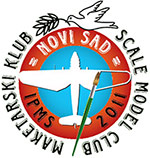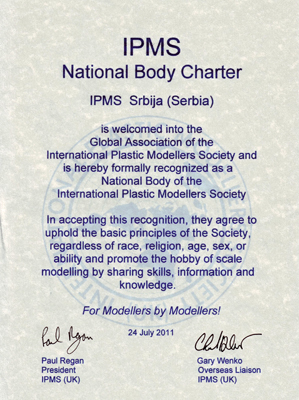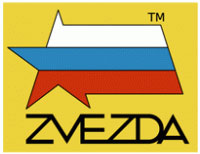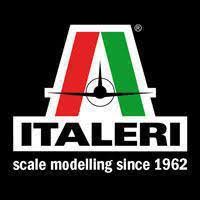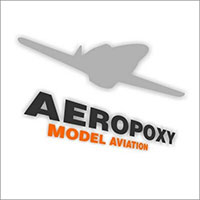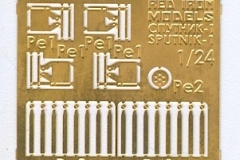04. oktobra 1957. godine u 22:28 po moskovskm vremenu ljudska civilizacija je ušla u svemirsko doba. Sa poligona Tjuratam (budući Bajkonur) u kazahtanskoj stepi, zagrmela je raketa R-7 noseći prvi veštački satelit u orbitu. Otac sovjetske kosmonautike, poznatiji kao ‘glavni konstruktor’, Sergej Pavlovič Koroljev je posmatrao svoja dva čeda, raketu R-7 i ‘Простейший Спутник-1’ ili prosti satelit kako jezde u noć. Koroljev je bio zadužen za konstrukciju rakete koja bi mogla dostaviti nuklearno punjenje na teritoriju potencijalnog neprijatelja (R-7, poznatija kao Semjorka). Mada je sam Koroljev imao drugačije zamisli i ideju o mirnom istraživanju svemira, pošto je vojska tada kontrolisala sve rakete, morao je da im doskoči. Naime, u Ministarstvu odbrane je izneo ideju špijuna koji sa orbite posmatraju potencijalne protivnike, sa kojom je dobio ‘zeleno svetlo’. No, kako se sovjetska industrija nije još u potpunosti oporavila od rata, nisu bili u stanju da izrade dovoljno pouzdane instrumente za taj satelit, a rokovi su se primicali. Pošto se nije smelo dozvoliti da Sovjeti ne budu prvi u svemiru, Koroljev je doneo odluku da se napravi ‘prosti satelit’, odnosno aluminijumska kugla koja će u sebi imati senzore pritiska i temperature, čije će očitane vrednosti slati na Zemlju preko svoje četiri antene na dve frekvencije. Sputnjik je otvorio novo poglavlje tehnološkog i naučnog napretka, ali i Hladnog rata. Sputnjik je bio u orbiti 92 dana, ispunivši punih 1440 revolucija oko Zemlje, odnosno prešavši oko 60 miliona kilometara. 04. januara 1958. je ušao u atmosferu i izgoreo.
O maketi:
Maketa predstavlja prvenac u stirenu firme Red Iron Models iz Moskve koja je do sada makete pravila samo u rezinu i tematski su bila zastupljena radna vozila (različiti kamioni, bageri, dizalice i ostalo sovjetske proizvodnje) i sovjetski kosmički program. Maketa dolazi u 20 delova na jednom ramu svetlosive plastike. Nema vidljivih znakova izbijača sem na jednom delu postolja (koje dolazi u dva dela), kao ni viškova plastike oko delova. Sem plastike u kutiji su još četiri mesingane šipke (za antene) i malena table ecovanih delova za postolje antena. Merenjem sam ustanovio da je prečnik sfere odgovarajuć realnom, naravno skaliran na datu razmeru. Kutija ima lepu ilustraciju Sputnjika-1 na orbiti oko Zemlje, dok je na poleđini dat izgled sastavljene makete. Uputstvo za sastavljanje dolazi na četiri dvolista veličine bukleta za cd otprilike. Samo uputstvo je dato pregledno, doduše nema puno delova pa i to igra ulogu, videćemo kad ova firma izbaci neku kompleksniju maketu u pogledu broja delova u stirenu. Ovako na prvu loptu jedina zamerka koju imam su predebeli spojevi delova na ram, doduše delovi su relativno veliki pa ne bi trebalo da bude problema. Sugestija proizvođaču, možda probati ukoliko je tehnološki izvodljivo dizajnirati makete sa tanjim spojevima delova i da budu malo pristupačniji na samom ramu, pogotovo ako se ide u pravcu pravljenja detaljnijih maketa ubuduće.
Preporučio bih ovu maketu prvenstveno svima koji vole svemirski program, i uopšte istraživanja svemira, a potom i kao vikend projekat ostalim maketarima.
Zahvalio bih se Red Iron Models-u što su nam ustupili svoj prvenac u stirenu za ovu recenziju i iskreno se nadam da će što veći broj maketa sovjetskog kosmičkog programa biti u planu za dalje makete.
……………………………………………………………………………………………………………………………………………………
On October 4th 1957 in 22:228 Moscow time, human civilization entered space age. From Tyuratam range (future Baikonur cosmodrome) the R-7 rocket thundered to space carrying the first artificial satellite to its orbit. The father of Soviet space program, better known as ‘chief designer’ Sergei Pavlovich Korolev observed his two achievements R-7 rocket and ‘Простейший Спутник-1’ or ‘Elementary satellite’ flying through the night. Korolev was the man in charge of constructing the first Soviet rocket capable of delivering nuclear payload to any potential adversary (R-7, better known as Semyorka). Although Korolev had different ideas about rockets and their use to peacefully explore space, since Army controlled all the rockets at that time, he had to find alternative approach to fulfill his ideas. Therefore, he made a proposal to the Ministry of Defense to make a vessel for the spies so they can observe potential enemies from space. The project was accepted, but since Soviet industry had difficulties in achieving the required technological complexity due to recently finished WWII and with timeline looming around the corner, he had to refine idea. It was out of the question for Soviets to be second in space, therefore Korolev made a simple satellite, as an aluminum orb, equipped with pressure and temperature sensors and radio transmitter. It was supposed to send back data from sensors using its four antennae in two different frequencies. Sputnik opened a new chapter in scientific and technological development, but unfortunately in Cold War as well. Sputnik spent 92 days in orbit, completing full 1440 revolutions around the Earth while traversing around 60 million kilometers. On January the 04th 1958 it entered atmosphere and burned.
About the model:
The model represents the first styrene model from Red Iron Models Company based in Moscow, which published only resin models so far, with topics being utility vehicles of different kinds (dozers, trucks, cranes etc. of Soviet origin) as well as Soviet space program. The model has 20 plastic parts on one light grey tree. There is no ejector pin marks visible except on one of the parts for the stand (there are two parts for the stand), as well as no flash around the parts themselves. Besides styrene there are 4 brass rods (for antennae) as well as a small sheet of PE parts which are the antennae bases. By measuring the diameter of the sphere I concluded that it corresponds to the real very well, of course scaled down. The box has a very nice illustration on the front with Sputnik-1 orbiting the Earth globe, while on the back there is an illustration of the assembled model. The instructions come on four double-sided pamphlet the size of the CD booklet or a bit bigger. The instructions themselves are very good and easy to follow, but there are not much parts and steps to begin with. That remains to be verified when this company makes a model of a more complex subject with smaller parts in styrene. The first impression is rather good with one downside. That is the connectors of the parts to the tree are on the big side and parts are narrowly packed, but relatively big so it shouldn’t be a problem with this model. However, I would like to suggest to the Red Iron Models that, if technologically feasible, they should go towards thinning the connectors and making parts a bit further one to the other, especially if they plan to build ever more complex models in styrene.
I would recommend this model mainly to the fans of space program and space explorations, but as weekend project to other modelers as well.
Thank you to Red Iron Models for providing us with their first ever styrene model for this review and I sincerely hope that they will continue casting Soviet space program models in styrene.
